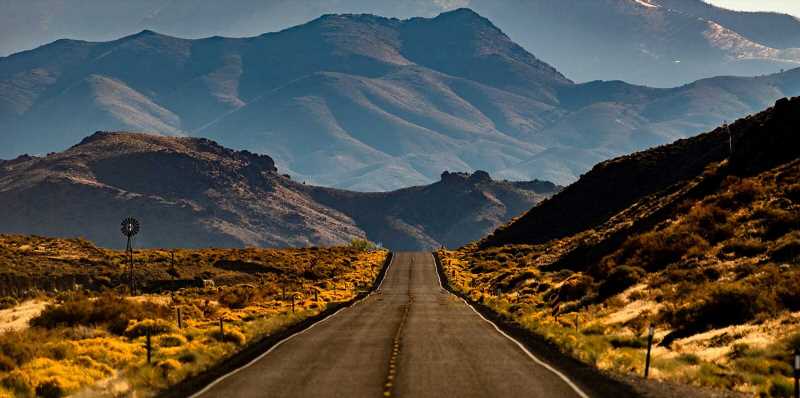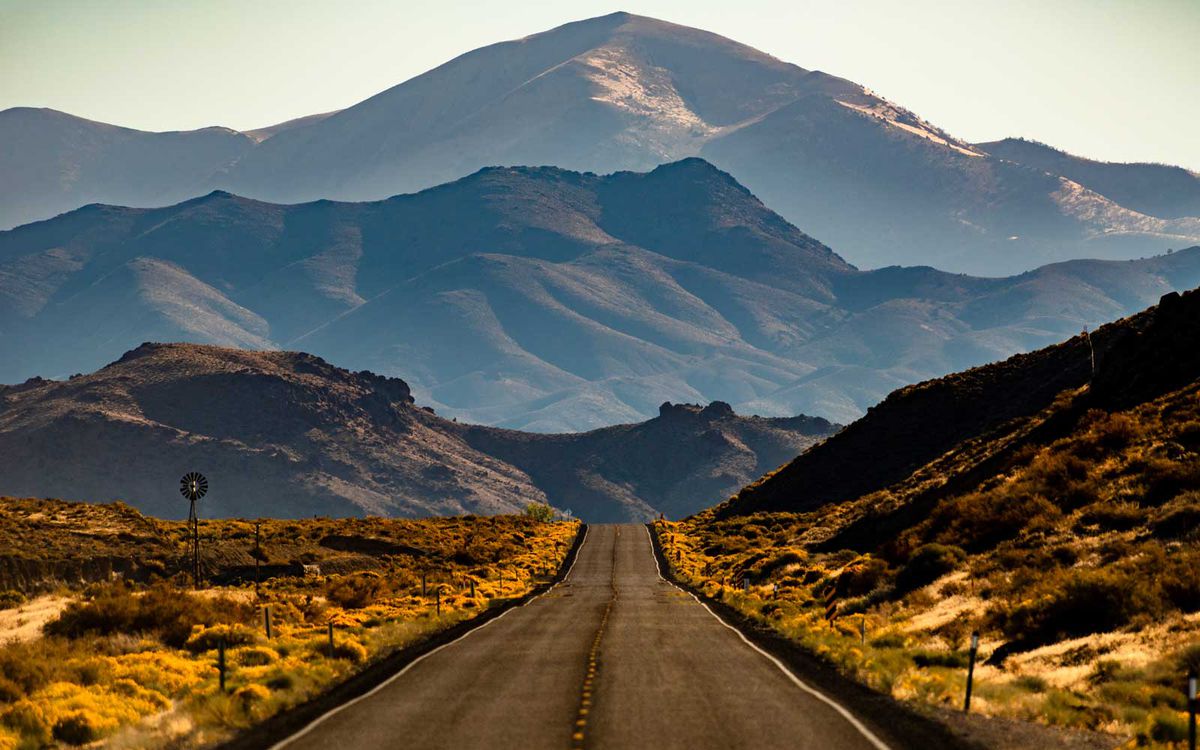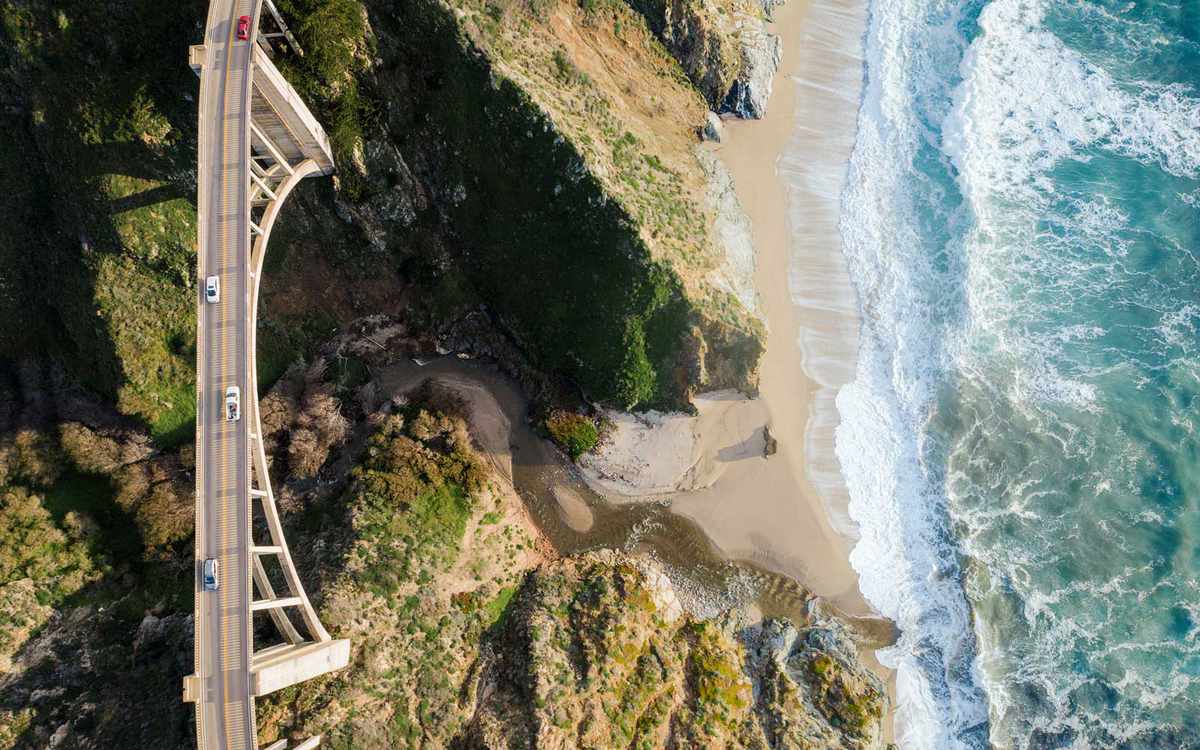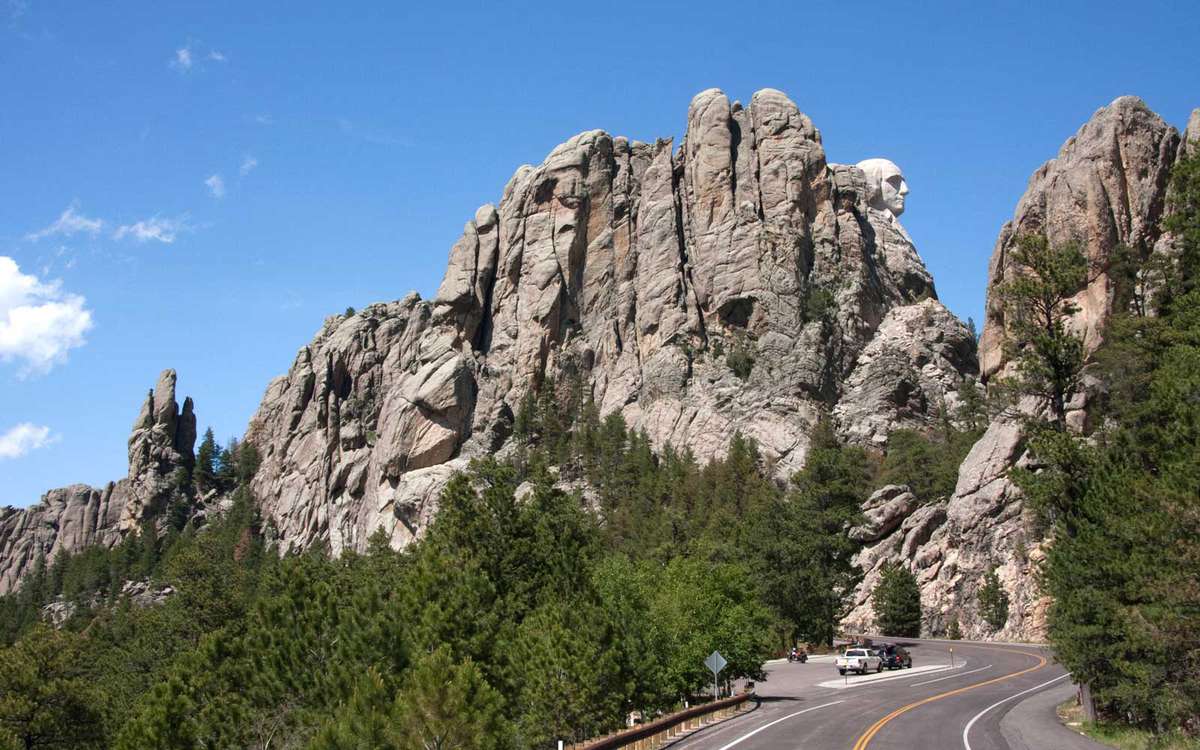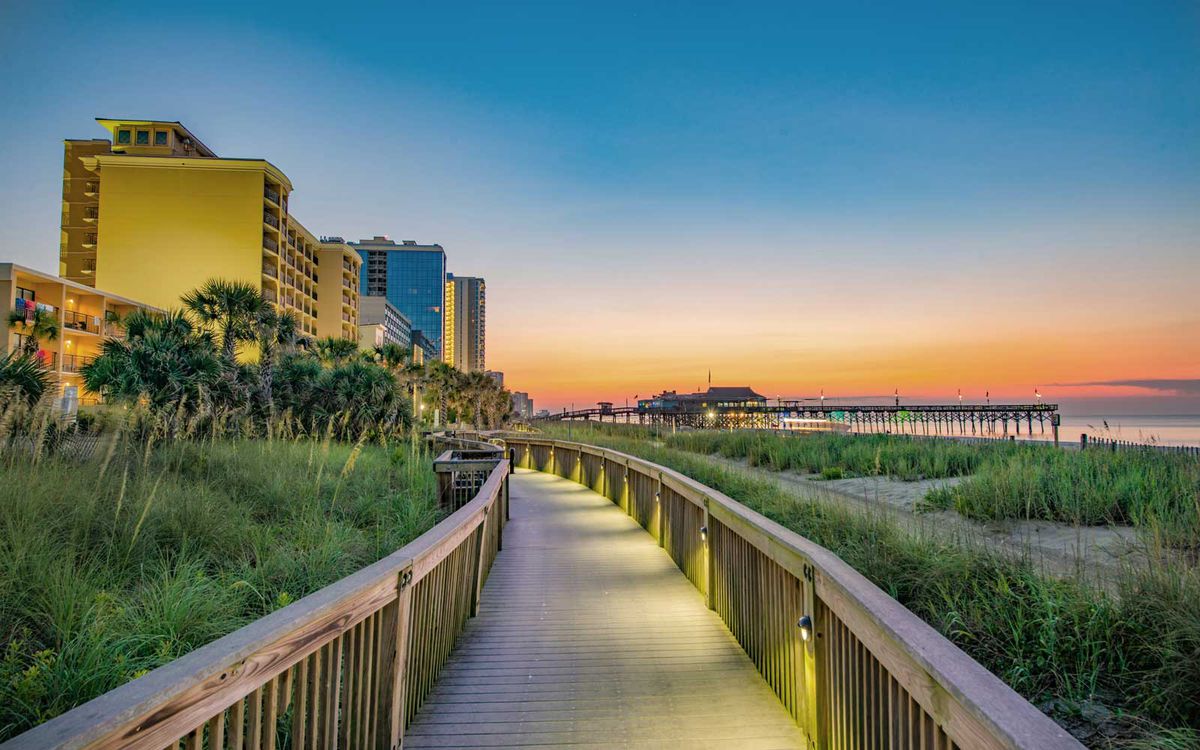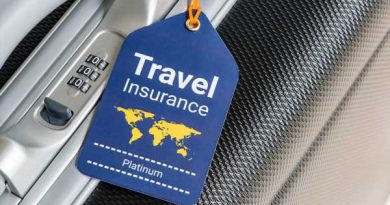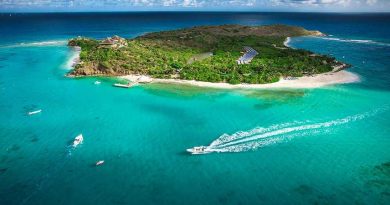Bucket-list Road Trips for Every Decade of Your Life
Editor's Note: Travel might be complicated right now, but use our inspirational trip ideas to plan ahead for your next bucket list adventure.
There's nothing quite like being out on the open road. And as travel slowly returns, planning a truly epic, once-in-a-lifetime road trip may be the perfect reintroduction. As we grow as travelers, our tastes continue to evolve – meaning the road trip that spoke to you as a 20-something might not be right for you in your 40s. So, to get you started on your next great American adventure, we've outlined where to road trip (and what to see along the way) during each decade of your life
The truth is, you'll never outgrow the liberating feeling of packing up the car and taking on the role of the pilot, stopping on a whim or making a detour when something catches your eye. A transcontinental or multi-day road trip isn't just for college grads or retirees, there's a route for travelers in every decade of their life.
Of course, these routes are only meant to get the ball rolling. Like any good road trip pilot, feel free to add in stops and side trips that suit you to create your own personalized version of these epic road trips.
In your 20s: Pacific Coast Highway
Technically, you can make the coastal drive from northern California to San Diego in around 10 hours, but this is not the sort of road trip you'll want to rush. The Pacific Coast Highway (also known as Highway 1) is one of the most scenic drives in the world, so roll down the windows, enjoy the views, and keep on top of your Instagram story.
The route leads travelers right along the continental United States' westernmost coast, where "pull over the car, we need a photo" sunsets are the norm and castles, sea lions, and pebbly beaches are waiting to be discovered.
For a leisurely road trip, we recommend starting your adventure in Olympia, Washington and ending in San Diego, California, crossing three coastal states along the way. In Olympia, stock up on road trip essentials before heading west until you hit Highway 101 (which eventually leads to California's Highway 1).
Before you reach the Oregon border, swing by Washington's Cape Disappointment State Park. It's a great place to camp (or rent a yurt for the night), but you can also get out and stretch your legs on the 1.2-mile Cape Disappointment Trail or the 0.45-mile Benson Beach Trail. If you're lucky, you may spot an orca in the distance.
In Oregon, swing by the Devil's Punchbowl State Natural Area. During low tide, you can explore the tide pools and pack along a picnic, but you'll want to get to higher ground as the tide comes in and the ocean starts slamming and swirling into the natural carved-out bowl. For great photo ops, head to Cape Perpetua Scenic Area or take a hike and catch the sunset at the Samuel H. Boardman State Scenic Corridor.
When you cross the border into California, it doesn't take long to link up with Highway 1, the official start of the Pacific Coast Highway (or the PCG, for those in the know). Drive through Redwood National and State Parks – home of the tallest trees on Earth – and post up on the black-sand beach in King Range National Conservation Area's Shelter Cove. Further down the road, visit the historic lighthouse in Point Reyes National Seashore before hitting San Francisco's Golden Gate Bridge.
Once you've passed through the city, it won't take long before you hit Big Sur, a 90-mile stretch of dreamy coastlines, dramatic cliffs, and beautiful bridges along winding roads. You'll want to take your time here; highlights include Pfeiffer Beach, McWay Falls, Bixby Creek Bridge, and Pebble Beach. After you've passed Big Sur, stop by the stunning Hearst Castle (which has experienced some pandemic-related closures, so check the website before planning your visit) and Piedras Blancas, where you'll find elephant seals lounging. Make time for a hike in San Luis Obispo or a wine tasting just outside Pismo Beach in Paso Robles before swinging through Santa Barbara for shopping and a visit to the Santa Barbara Botanic Garden.
When you hit Los Angeles, soak up some culture at The Getty or people-watch at Venice Beach before making your way to the road trip's final stop: San Diego. Here, enjoy one final drive to La Jolla Cove Beach or Mission Beach and toast to your completion of the extended Pacific Coast Highway.
In your 30s: The Loneliest Road
Traversing the continental United States - literally from sea to shining sea - is U.S. Route 50, also known as The Loneliest Road. Your trip starts in Sacramento, California and ends in Ocean City, Maryland around 3,200-miles later. Named "The Loneliest Road in America" by Life magazine in 1986, this route takes travelers through tiny towns and sparse, open spaces, providing a peek at what some consider to be the "real America."
Embrace the "lonely" theme and make it a solo mission, or grab a friend and make the trip anything but lonesome. Either way, you're in for a treat. The route passes through a dozen states and landscapes that include the Sierra Nevada, Appalachian, and Rocky Mountains; the Great Plains' open farmlands; and the dry, high deserts of Utah.
From Sacramento, follow the old Pony Express route up into the Sierra Nevadas, where you'll hit the shores of Lake Tahoe. Enjoy a swim, or just take in the view, before hopping back in the car and making your way toward Nevada, on the portion of the road that gave the route its name. After miles and miles of little more than mountains and sagebrush, you'll climb over Utah's Wasatch Front and into red-rock country, home of Moab's Arches National Park and Canyonlands National Park.
Continuing east, head through the Rocky Mountains, crossing over the Continental Divide. Grab a hearty lunch and more road trip provisions in Salida, Colorado before heading into eastern Colorado and the start of the Great Plains, where you'll get a healthy dose of Americana landscapes - small towns, railroad tracks, and water towers.
From here, U.S. Route 50 crosses from Kansas City to St. Louis and traverses the Mississippi River before heading into the agricultural heartlands of Illinois, Indiana, and finally, Ohio. Swing through Hoosier National Forest in Indiana and the college town of Athens, Ohio. In West Virginia, make a point to enjoy the scenic vistas of Monongahela National Forest before hitting Virginia and the bustle of downtown Washington, D.C. After the mayhem of the city, you'll pass through a few fishing and farming communities in rural Maryland, and then arrive in your destination: Ocean City, Maryland.
Once you reach Ocean City, take some time to walk the boardwalk, put your feet in the sand, and reflect – you made it.
In your 40s: Grand Canyon to Yellowstone to Mount Rushmore
This 1,290-mile route takes around 20 hours and includes stops at the Grand Canyon, Yellowstone National Park, and Mount Rushmore. Providing the perfect blend of outdoor activity, family car time, and American history, it makes for the ultimate week-long family road trip.
Your journey kicks off in Flagstaff, Arizona, just over an hour from Grand Canyon National Park's South Rim, which is open year-round. In the park, cruise along Desert View Drive and burn off some energy while climbing the 85 steps to the top of the Desert View Watchtower, where you can enjoy 360-degree views of the canyon.
From here, continue north toward Salt Lake City, Utah. Take a small detour through Park City – for biking, rafting, hiking, and plenty of mountain town charm – before stocking up in Salt Lake City and preparing for the next stretch. If you have time (or need a break from the car), check out the beaches and trails on Antelope Island or visit the Bear River Migratory Bird Refuge north of Ogden, Utah.
From northern Utah, make the long haul through Idaho until you hit the Montana border, where you'll be able to drop into Yellowstone National Park's west entrance near the city of West Yellowstone, Montana – assuming you're visiting between early April and early November, when the road is open to the public. From the west entrance, you can access the Old Faithful geyser in just over an hour, and it's another 40 minutes to Grant Village on beautiful Yellowstone Lake.
When you're back in the town of West Yellowstone, head north toward Bozeman, Montana, a great place to get out, stretch your legs, and do some exploring. From Bozeman, head east toward Billings. Pass through the Crow Reservation before hitting Wyoming's Bighorn National Forest, one of the oldest government-protected forest areas. From here, you'll pass into North Dakota, home of the Black Hills National Forest and Mount Rushmore – your final stop.
In your 50s: The Oregon Trail
Entering your 50s marks a transition – perhaps you have kids who are leaving the nest, or are looking ahead to retirement. It's a shift that warrants plenty of time to reflect and enjoy the beauty of the U.S. And what better way to achieve that than a transcontinental road trip? The Oregon Trail is a beautiful, roughly 2,000-mile route that connects Missouri to Oregon.
Just like the pioneers in the mid-1800s, you can start your expedition in Independence, Missouri, making your way west – although at a much faster pace – toward Oregon. You'll pass through the beautiful, expansive Great Plains before stopping in Sioux City, Iowa to get a dose of culture at the Sioux City Art Center. In Nebraska, make a stop at the Ashfall Fossil Beds State Historical Park, a protected area full of fossils.
Once you pass into Wyoming, you'll slowly head west toward the mountains, home of Grand Teton National Park and the iconic Yellowstone National Park. Depending on the season, you can pick your national park of choice and make the appropriate turn at Shoshoni, Wyoming, heading north toward Yellowstone or south toward the Grand Tetons and Jackson Hole, Wyoming. The two routes link up again in Idaho Falls, Idaho, where you continue west.
In Idaho, don't miss Craters of the Moon National Monument & Preserve, a vast wonderland of solidified lava, and make sure to stock up on road trip essentials and explore Boise, Idaho before crossing into Oregon. Here, you'll pass through the Blue Mountains and Cascade Range before dropping into Portland, and finally, Oregon City. Continue on to Cannon Beach and Ecola State Park if you're ready for some fresh sea air and a taste of the rugged Oregon coastline.
In your 60s: Route 66
The romance of Route 66 is only amplified by driving the aptly named road in your 60s – even better if you happen to be 66. The route runs from Chicago to Los Angeles, passing through the heart of the U.S. and some notorious roadside stops. Jam "Route 66" by the Nat King Cole Trio as you zoom by the best of Americana – from giant neon signs to tiny towns and vacant truck stops.
Before it became the Route 66 we know today, there was the transcontinental National Old Trails Road, and years later, around World War II, it was a main thoroughfare through small towns across the Midwest and Southwest. During the Great Depression, farmers displaced by the Dust Bowl traveled to California along the route. Today, you'll get a taste of Route 66's long history as you pass old-timey diners and motels and plenty of roadside attractions that provide a healthy dose of nostalgia.
Starting in Chicago, head toward Springfield, Illinois, where you can visit the Lincoln Tomb. From here, continue south to Missouri and pick up a refreshing frozen custard at Ted Drewes Frozen Custard in St. Louis. Cruise through the open plains and hills of Oklahoma, making pit stops in Tulsa and Oklahoma City.
As you pass through the northern tip of Texas, drop by Cadillac Ranch, a 1974 public art installation that consists of 10 Cadillacs tilted nose-first in the ground. In New Mexico, make sure to spend some time in Santa Fe, a rich cultural city full of museums, shopping, and amazing food (make sure to try something smothered in green chiles). And if you have time, make a detour to the South Rim of the Grand Canyon National Park as you pass through Flagstaff, Arizona.
Continue on Route 66 to Los Angeles, where you can get your fill of old Hollywood before ending your trip – drink in hand – looking out over the Pacific Ocean.
In your 70s and Beyond: The Atlantic Coast
Your 70s are the perfect decade to hit the road and see the sights. The Atlantic Coast road trip starts in New York City and ends with a tranquil drive across the Overseas Highway to Key West – with plenty of coastal wilderness, beautiful beach resorts, and old fishing villages along the way. The trip is just under 2,000 miles and much of it runs along – or near – the Atlantic Ocean.
Start in New York City, where you'll want to spend a day or two checking out the sights – most notably, the Statue of Liberty, Ellis Island, and Times Square. From New York, head south toward Atlantic City, where you can cruise along the boardwalk, grab some food, or try your hand at gambling. Continue south toward Cape May and enjoy the city's Victorian charm before taking a ferry (car included!) to Lewes, Delaware. From Lewes Beach, you'll head into Maryland, swinging through the protected Assateague Island National Seashore. Cruising through states, make a quick stop on Virginia Beach before dipping down to Roanoke Island, North Carolina, where North America's first English-speaking colony mysteriously disappeared in 1587.
While in North Carolina, stop to stretch your legs in downtown Wilmington. For a taste of nostalgia, visit Myrtle Beach, South Carolina, which is home to a boardwalk that's lined with rides and saltwater taffy shops. If you're up for a round of golf, or some more beach time, head to Hilton Head Island, then drop down to Savannah, Georgia.
Once you cross the border into Florida, make time to visit the beautiful Cocoa Beach and grab a Cuban sandwich in Miami before heading farther south into the Florida Keys.
Source: Read Full Article
